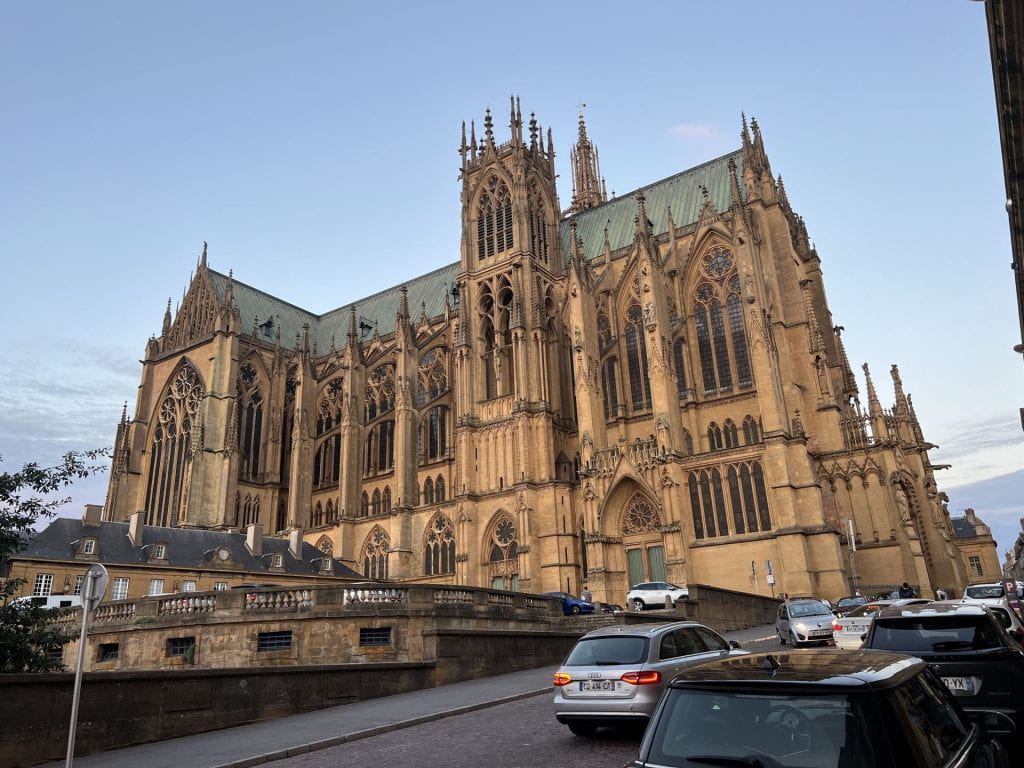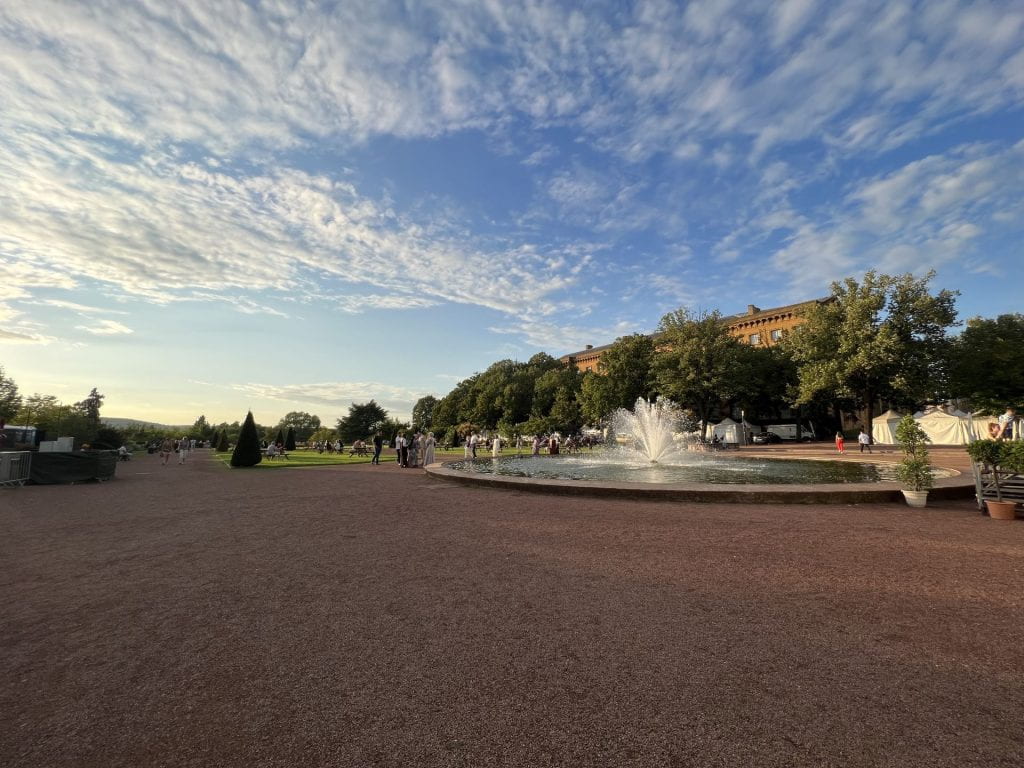Written by: Mahir Daiyan Ashraf
Waking City (8:45)
Place de la République is still settling when our HTS 2084 group gathers beneath the Galeries Lafayette awning. Café chairs scrape across the paving, and the warm smell of the boulangerie wafts out each time the door swings open. Cyclists coast the square in easy arcs, and the clock on the courthouse roof keeps its patient time. We count heads, tighten backpack straps, and step into the morning with the city awake enough to notice us, but not yet in a hurry.


Cathedral (9:00)
Saint-Étienne Cathedral makes its case in height and glass. High Gothic here is a working grammar: pointed arches teaching the eye to rise, ribbed vaults turning weight into lines, and flying buttresses keeping the reach in equilibrium. Metz calls it La Lanterne du Bon Dieu—The Good God’s Lantern—because so much wall has been given to stained glass that daylight becomes part of the building’s meaning. Windows from the 13th to the 20th century set medieval blues beside modern work, including panels by Marc Chagall. The nave lifts to about forty-one metres, the third tallest in France, and that vertical space exists to serve the glass rather than to outshout it. Bands of colour fall across the pale stone and drift as the clouds move; a few people kneel in prayer; the soft shuffle of footsteps carries through the great hall and thins under the vaults.
In the crypt and treasury, the air cools, and the objects get specific: Saint Arnoul’s ring, a carved bishop’s crosier from the high Middle Ages, and a small group of gilt chalices and processional pieces that mark the city’s liturgical calendar across centuries. Labels fix each work to a workshop and a date, so the craft has a place as well as a name. Nearby, scale models of major French cathedrals show how ideas travel between places. Local memory keeps the Graoully in the frame too, the dragon Saint Clément is said to have banished from the Roman amphitheatre, so legend sits beside light and metalwork, and the cathedral reads as a record as much as it does a monument.



Underfoot (11:00)
The Musée de la Cour d’Or opens the Roman chapter beneath the streets. Long before the Gothic ridge of windows, Metz was Divodurum Mediomatricorum, and you can follow that name in the floor itself: brick piers of a hypocaust holding a once-suspended room, a blackened flue where hot air ran, a stretch of masonry that still suggests the curve of an apse. There is tableware in common clays and finer red terra sigillata, glass vessels with a faint sea-green cast, lamps, keys, weights, spindle whorls, and a patient line of coins that date rulers more reliably than memory.
The route carries you forward into rooms where early Christian and medieval pieces take over: fragments of sculpture, metalwork, and painted stone that show how older techniques were adjusted rather than discarded. What you feel, moving from one level to the next, is practical continuity. Heating, drainage, storage, and craft persist while the purposes change. Infrastructure survives, techniques migrate, and later life stands on earlier work from quite literally, made two millennia ago.
Second Acts (14:00)
After lunch by the Moselle, we visited three nearby churches.

Saint-Martin kept the parish scale and a clear backbone. Set along the old Roman ramparts, it mixed Romanesque weight with later Gothic openings, and it even lacked a traditional façade, drawing entry through the south transept instead. The effect read as weekly use more than display, a steady parish rather than a spectacle.
The Templar chapel gathered space into a compact octagon, built around 1180–1220 and singular in Lorraine. Its ribs met cleanly at the center, fresco fragments lingered on the walls, and the plan recalled the order’s network that once tied Metz to routes far beyond the city.


Saint-Pierre-aux-Nonnains reached furthest back. The building began in the 4th century as part of a Roman complex and became a church by the 7th, later serving as a Benedictine house before centuries of other uses and a modern restoration. Inside, the surfaces stayed plain and exact, the Roman fabric still legible beneath the Christian plan, which is why it is counted among the oldest churches in Europe.
Seen in one walk, the three made the point without fuss, continuity held through reuse, and new purposes took root without erasing the layer beneath.

Continuum
By late afternoon, the day held together on its own. We turned off toward a café, found a table by the window, and let the city settle while cups of coffee and hot chocolate steamed between our hands. Outside, Metz kept moving, older lines still visible beneath the new.







































